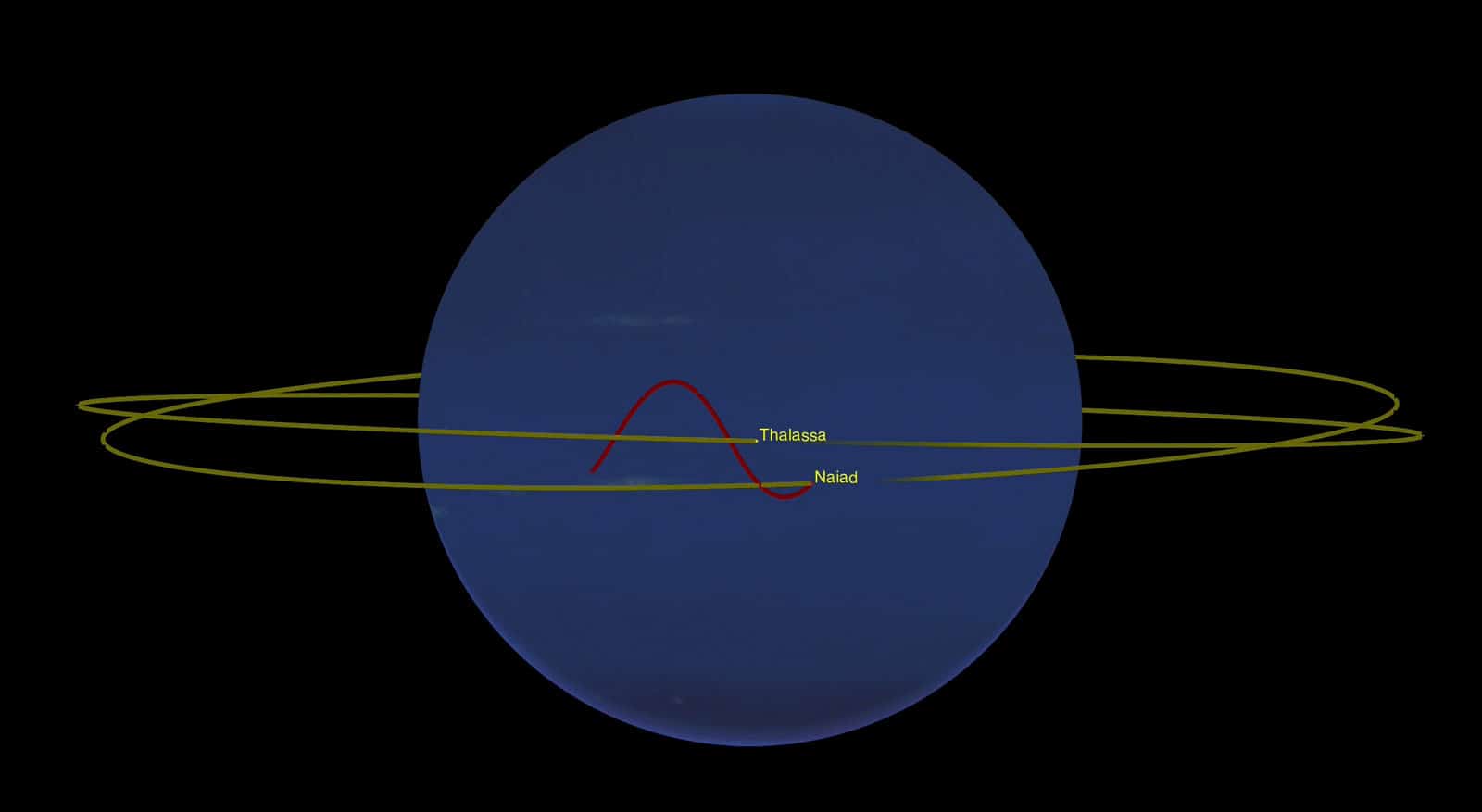

“Naiad and Thalassa have probably been locked together in this configuration for a very long time, because it makes their orbits more stable. “We are always excited to find these co-dependencies between moons,” said Showalter, who is also a co-author on the new paper. It was hidden from view during Voyager’s initial observation of Neptune and its moons. “Only later, after its orbital tilt was established, could Naiad settle into this unusual resonance with Thalassa.”Įarlier this year, Mark Showalter, a planetary astronomer at the SETI Institute, uncovered the 14th moon around Neptune called Hippocamp. Triton is the only moon in our Solar System with a retrograde orbit (orbiting in the opposite direction than its primary, Neptune, is rotating). Triton and Proteus orbit close to Neptune Nereid is in a distant orbit.

#Neptunes moons plus
“We suspect that Naiad was kicked into its tilted orbit by an earlier interaction with one of Neptune’s other inner moons,” Brozović said. Neptune has 13 moons, Triton, Nereid, Naiad, Thalassa, Despina, Larissa, Proteus, and Galatea, plus five smaller, unnamed moons. The seven inner moons, including Naiad and Thalassa that are each 60 miles long, are also interspersed with Neptune’s ring system. This is the first evidence for a moon being an offshoot from a comet collision with a much larger parent body. Only 20 miles across, it may actually be a broken-off fragment from a much larger neighboring moon, Proteus, seen as a crescent in the background. This is an artist's concept of the tiny moon Hippocamp that was discovered by the Hubble Space Telescope in 2013. 'Webb’s extremely stable and precise image quality also permits these very faint rings. 'In addition to several bright narrow rings, the Webb images clearly show Neptune’s fainter dust bands,' NASA said in a statement. They also thought these inner moons were fragmented due to impacts by comets. Whats happening: The JWST captured Neptune and its moons in infrared light, revealing the planets rings in amazing detail.

Since the discovery of the small inner moons, scientists have believed that they are younger than Neptune and that they formed after Neptune captured its largest moon, Triton. Some of the moons formed in place along with Neptune while others were captured by the planet’s gravity. Neptune is a gas giant distant from the sun in the outer solar system and it has 14 moons. How do they make it work? Check it out: /AU4v9fLBPo- NASA November 16, 2019 Up, up, down, down - do the Neptune Moon dance! 🕺Partners w/ chemistry AND rhythm, Moons Naiad & Thalassa are caught in a “dance of avoidance” choreographed so precisely that neither steps on the other one’s toes. “There are many different types of ‘dances’ that planets, moons and asteroids can follow, but this one has never been seen before.” “We refer to this repeating pattern as a resonance,” said Marina Brozović, study author and expert in solar system dynamics at NASA’s Jet Propulsion Laboratory. The observations of the orbital patterns were made using NASA’s Hubble Space Telescope. When Neptune got its stunning close-up: The Voyager 2 flyby, 30 years laterĪ study of these orbits published recently in the journal Icarus. North of these, a bright cloud band similar to the south polar streak may be seen. These clouds were seen to persist for as long as Voyager's cameras could resolve them. The picture shows the Great Dark Spot and its companion bright smudge on the west limb the fast moving bright feature called Scooter and the little dark spot are visible. The images were taken at a range of 4.4 million miles from the planet, 4 days and 20 hours before closest approach.

(On Earth, we see the effects of such a transfer in our tides.) But for the moment, the unusual resonance seems to protect the moons from one another, keeping them at a comfortable, stable arm's length.This picture of Neptune was produced from the last whole planet images taken through the green and orange filters on the Voyager 2 narrow angle camera. Too much is unknown, most importantly the precise mechanics of how energy from the moons' orbits gets transfered down to Neptune. It's not clear how long the two little moons, much smaller than Earth's and influenced by the gravity of a much larger planet, have been locked in this pattern, the researchers said. Then, you could zoom around to the other side of the moon (if you had a superfast vehicle) and see the twin moon pass once and then twice over the south.
#Neptunes moons zip
From Thalassa's northern end, you'd seed Naiad zip overhead once before traveling over the north again on its next pass. (Image credit: NASA)įor a viewer standing on either moon, the other satellite would appear to wiggle crazily across the sky as it passed. The point of view in this animation follows Thalassa, so it always appears to be in the center of the image, but both moons wobble relative to one another. An animation shows how Naiad and Thalassa dodge one another on their nearly-overlapping orbits.


 0 kommentar(er)
0 kommentar(er)
